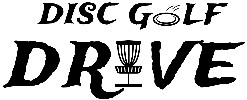So you are ready to start driving but with all the information to know, it can be a bit overwhelming. So here’s a handy guide to help choose the driver that is best for you.
Most likely, if you’re are reading this page, you are a beginner/intermediate. Don’t feel bad. Everyone starts here. But the decisions you make at this stage of your game can have a tremendous impact on your growth and development as a player so it’s great to make the right decisions early.
It’s easy to see what the pros throw and think “I want to throw like (your favorite pro)”. However, these pros use very specific discs that are in alignment with their arm speed and technique. By using these discs, you can severely hinder your growth as a player by learning poor technique.
For beginners, I recommend starting with a neutral/understable fairway driver. These will help you learn proper technique and learn to control your drives so you don’t spend the majority of your time in the woods looking for errant shots. These discs will be in the 6-8 speed range and will typically have high turn and low fade. These discs typically fly true in that they will hold the line they are thrown on better than overstable drivers.
A classic starting driver is the Leopard from Innova. It’s flight characteristics are 6,5,-2,1. The low speed means the disc is easy to control which will help keep it in the fairway. The turn of -2 means it won’t crash and burn left as soon as it leaves your hand. The fade of 1 means it will have a gentle finish as opposed to a big skip. This combination of factors make it a great starting driver. For your first driver, look for discs in this range that have -1 to -5 turn and have fades of 0-2.
“What’s wrong with starting with a destroyer?”
The destroyer is the most popular driver and most people want to throw like the people they see on TV. The reason I recommend against this is because it is too fast and too overstable for anyone that does not throw 400+ feet. When we use a disc that is too fast, we sacrifice an incredible amount of accuracy for a slight improvement in distance. A 300 ft shot into the woods is not better than a 240 ft shot into the fairway.
“But can’t I just throw it on more anhyzer?”
This adjustment is common with beginners where they will release it at a severe angle to make it turn right initially. This will work to a point as your disc will finish straight now. But you are reinforcing bad technique and are forcing your disc on a very specific flight pattern. This may work on wide open courses but when you have to hit a tight line, you don’t want to be reliant on a giant S-curve.
A general rule of thumb is to start with slower speeds and work your way up. We will all try out the “pro level” discs but for long-term growth, it is recommended to “disc down” and learn to keep your shots in the fairway. As your skill level increases, you can start looking at faster, more overstable discs to complement your increasing arm speed. But if you are throwing sub-300, keep your discs in the 6-8 range. If you throw 300-400, expand your discs to the 8-11 speed range. And if you throw 400+, you can get into the 11-14 speed range.
